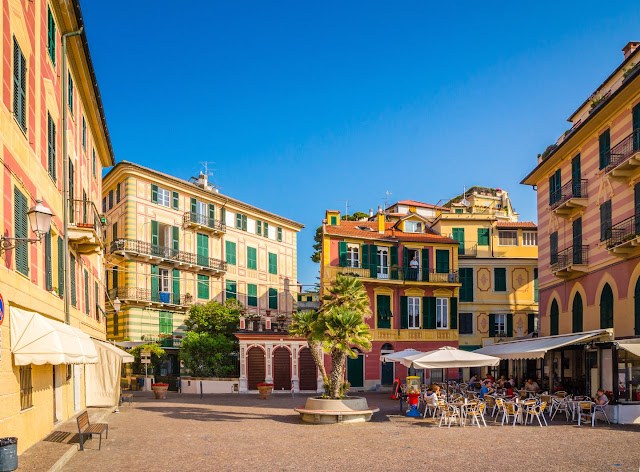Reasons Why Celle Ligure Is the Authentic Riviera Destination
Celle Ligure quietly nestles in the centre of an enchanted bay in the
eastern section of the province of Savona, which was also the birthplace (1414)
of Pope Sixtus IV.
The seaside promenade, the pastel buildings, the hills of Sanda and
Pecorile and Cassisi, clusters of houses in the sun, the fabric of little
churches and chapels, the lively events (ancient crafts, food and wine): all
these elements reveal - even in the so-called low season - the genius
loci of a famous village, at the same time far from the madding
crowd, now deservedly included in the Borghi più Belli d’Italia (i.e.,
Most Beautiful Villages in Italy) network.
The historic centre is a Mediterranean heritage kaleidoscope: noble residences and alleyways, the beautiful Consolation church on the seafront, towers and fortified houses built to spot frequent pirate raids, ceramics, and open-air artworks. Celle also treasures the 16th-century Polyptych of San Michele in the homonymous church, together with works by De Ferrari, Fiasella, Piola and Maragliano.
There is more history in a wave of the Mediterranean than in all the
oceans in the world, affirmed writer Raffaele La Capria. The
Mediterranean Sea of Celle Ligure has been awarded FEE Blue Flag for 27 years,
thanks to the environmental quality of the coastline and the services of the
small marina of Cala Cravieu.
Furthermore, this coastal centre is an easy-rich through highway, via
Aurelia, train.
Fish, vegetables and fruit have always been vital resources for the local economy. Dry-stone-walled terraces rise vertically: the mild microclimate fosters fruit trees (the providers of jams, too), vineyards, and olive trees for a gentle extra virgin, basil, borage, and aubergines. Here and there, beekeepers' hives dot the place.
In the village streets, the scent of focaccia and focaccette, farinata, pesto, anchovies fitö faete (i.e., quickly cooked), ciuppin (i.e., fish soups), buridde (i.e., fish stews), cima, vegetable savoury pies, stuffed pumpkin flowers and other treats.
Finally, the ritual of preböggiön (i,e., wild herbs mix) is also well perpetuated locally. Celle Ligure lays claim to a peculiar version which features: garatun (Hyoseris Radiata), scixerbua (Sonchus Oleraceus), gattalevre (Reichardia Picroides), rampusciu (Leontodon Tuberosus), radicciun (Hypochoeris Radicata), gea (Beta Vulgaris), indivia (Cichorium Indivia), boraxe (Borago Officinalis).
My English abstract of an article published on LiguriaFood
This is the fascinating world of tastes and crafts that LiguriabyLuisa discloses to foreign markets and buyers (tour operators, travel agencies, organizations, associations, food&wine dealers and import/export professionals....).
Contact me and detail your queriesnd olive trees for a gentle extra virgin, basil, borage, and aubergines. Here and there, beehives dot the pla



Comments
Post a Comment